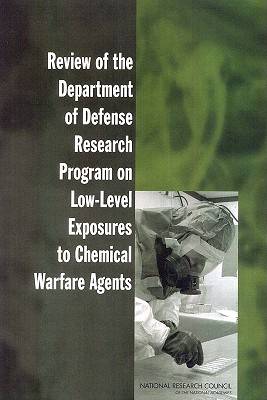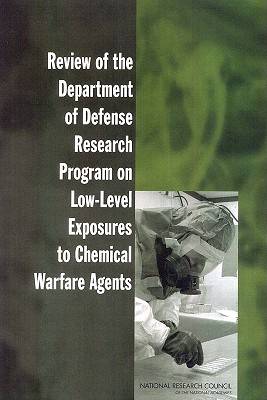
- Afhalen na 1 uur in een winkel met voorraad
- Gratis thuislevering in België vanaf € 30
- Ruim aanbod met 7 miljoen producten
- Afhalen na 1 uur in een winkel met voorraad
- Gratis thuislevering in België vanaf € 30
- Ruim aanbod met 7 miljoen producten
Zoeken
Review of the Department of Defense Research Program on Low-Level Exposures to Chemical Warfare Agents
National Research Council, Division on Earth and Life Studies, Board on Environmental Studies and Toxicology, Committee on Toxicology, Committee on Toxicologic Assessment of Low-Level Exposures to Ch
Paperback | Engels
€ 50,45
+ 100 punten
Omschrijving
Research related to chemical warfare agents (CWAs) has historically focused on life threatening battlefield effects caused by high level exposures to the agents, not effects associated with exposures to low concentrations of them. In this report, low level concentrations refers to exposures that may not have any immediate observed health effects, but may produce delayed health effects months or years later. Recently, there has been increased concern about the potential health effects of exposures to CWAs at low concentrations. This report reviews the Department of Defense's (DOD) Research Plan for obtaining toxicologic and other relevant data to assess risk to military personnel. The CWAs of concern include the following nerve and vesicant agents: tabun, sarin, soman, cyclosarin, VX, and sulfur mustard. The report discusses the health effects of exposure to low levels of these agents and provides guidance to DOD on appropriate risk assessment methods for assessing toxicologic risk to military personnel from low-level exposures to CWAs. The report concludes that DOD's Research Plan is well planned and many of the proposed research tasks are likely to provide valuable information to DOD in protecting military personnel.
Specificaties
Betrokkenen
- Auteur(s):
- Uitgeverij:
Inhoud
- Aantal bladzijden:
- 122
- Taal:
- Engels
Eigenschappen
- Productcode (EAN):
- 9780309100212
- Verschijningsdatum:
- 8/01/2006
- Uitvoering:
- Paperback
- Formaat:
- Trade paperback (VS)
- Afmetingen:
- 152 mm x 224 mm
- Gewicht:
- 204 g

Alleen bij Standaard Boekhandel
+ 100 punten op je klantenkaart van Standaard Boekhandel
Beoordelingen
We publiceren alleen reviews die voldoen aan de voorwaarden voor reviews. Bekijk onze voorwaarden voor reviews.











